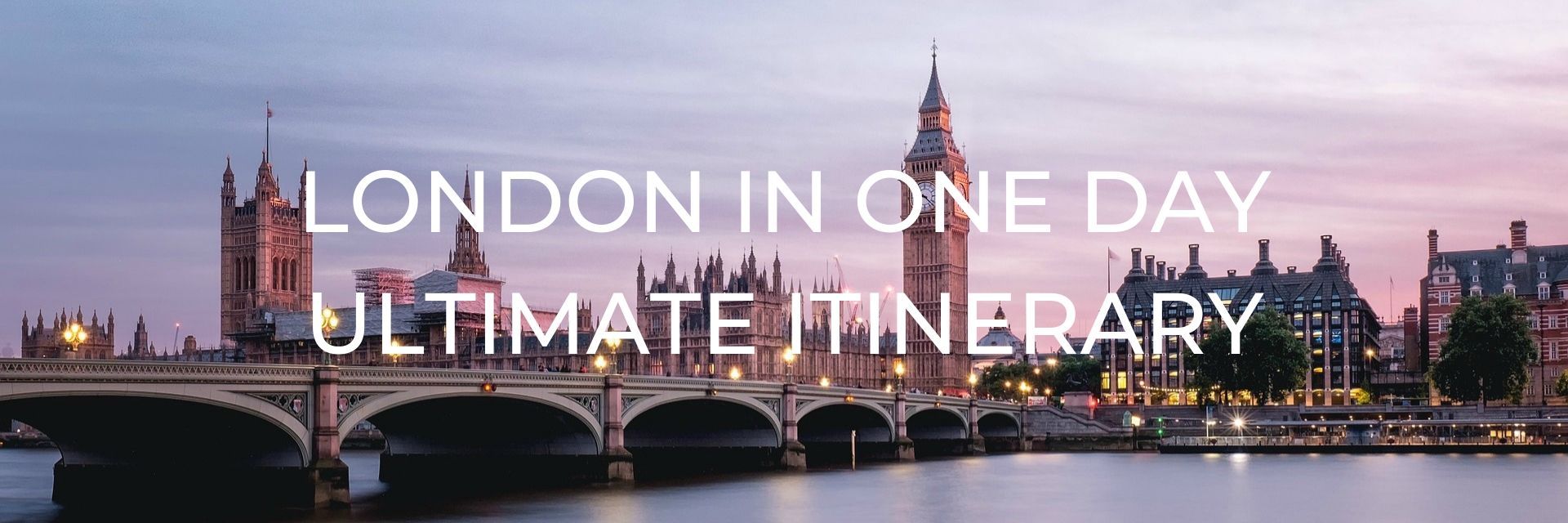
One day in London barely scratches the surface to see all the wonderful things this city has to offer but that might be all the time you have. Perhaps you’re on a business trip and only have one day before you have to fly back home. Or you’re on a tour of England or Europe and only have one free day to do London.
So what do you do?
Want to save this for later? Click the Pinterest button on the left for a pinnable image!

This post may contain affiliate links. Please read our full disclosure policy here.
There is definitely more than one way to spend your day wisely and really enjoy London.
Some people would like to pick one or two things, like the Tower of London and Tower Bridge, and spend some time exploring each of them with some depth. Some would like to pick one thing, like the British Museum, and spend the whole day really taking it all in. And then others would like to see as many of the main attractions and landmarks as possible to get a taste of the city. And that’s what this itinerary can help you with.
PLANNING FOR YOUR DAY OUT IN LONDON
With a day as packed as the one on this itinerary, it does take some advance planning. You don’t want to zigzag all over the city and waste precious time and you want to feel like you’ve had a few moments to relax and just take it all in. Hopefully, this itinerary will give you that balance, along with anticipating some of the questions you might have, to help you have a wonderful experience.
Some of the questions you might have are:
- I didn’t think to bring any drinks with me. Where can I pick some up?
- I’m hungry. What would be a good place to have lunch or dinner in the area?
- I need a toilet. Where can I find one? And will it really cost me money? (the answer is yes…public toilets do cost money)
- I want to bring some souvenirs home to the family…but really don’t want to carry them around all day. Do you know a good spot to stop?
And …what the heck are all these buildings I’m walking by from one big landmark to another? Are any of them something I might be interested in knowing about too?
You can sit back and relax because I’ve got you covered.
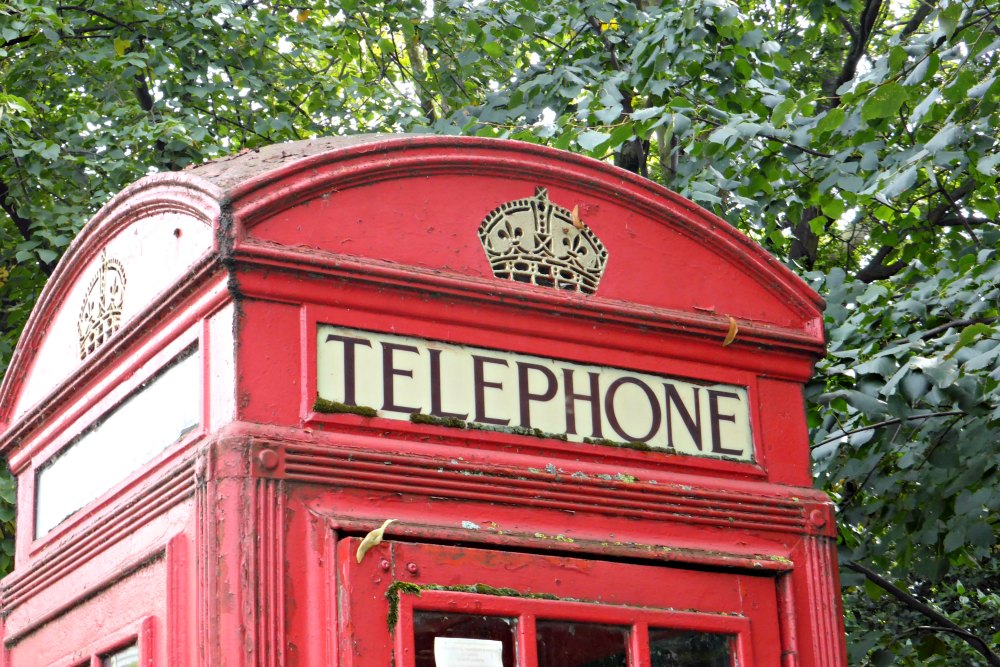
Your GREAT day out starts with ensuring you have some essentials:
- Comfortable shoes: Nothing ruins a day quicker than sore feet and blisters. Wear something you know you can walk in most of the day.
- Some small change for those public toilets: About 50 pence should be enough for each toilet. Bring 10p and 20p coins in lieu of only 50p coins and you’ll be covered if they cost less too.
- An umbrella: If there is any chance of rain, bring one. You have lots to see, and with an umbrella, you’ll still be able to enjoy it in most rainy conditions. Plus it seems like an umbrella is the best “rain prevention system” there is. I have many days in London with bright sunny skies that will attest to this.
- Sunblock: Because you’ve brought your “rain prevention system” the skies will be sunny and blue for you so you certainly don’t want to dampen what was a wonderful day with a painful sunburn.
- A pass for the Tube: There will be several trips on the Tube for this itinerary, in addition to getting to the starting station from your accommodations and then back again at the end of the day. These can be picked up at the station you start from (or ordered online ahead of time – see further information below) and they are good all day for as many times as you want to use them on the Tube and the double-decker buses. For this itinerary, you’ll only be travelling in Zone 1 but will also need to take into consideration which zone your accommodations are in and buy a Tube pass accordingly.
- A bottle of water or your drink of choice: Sometimes it’s good to have a little snack like a granola bar or similar too (just in case you’re one of us that tends to get a wee bit irritable when you’re hungry and your dinner is still a little way off yet).
- Your London Eye Tickets that you’ve purchased in advance: More information below.
- Your camera! With so many things to see today make sure that the battery is fully charged and you have lots of memory on your SD card left. You’re going to need it!
LONDON TUBE PASS
There are several options available for Tube passes and the one you choose will depend on how long you are staying, whether you are travelling with children (over 11 years old) and if you have enough time to order the pass from home or not.
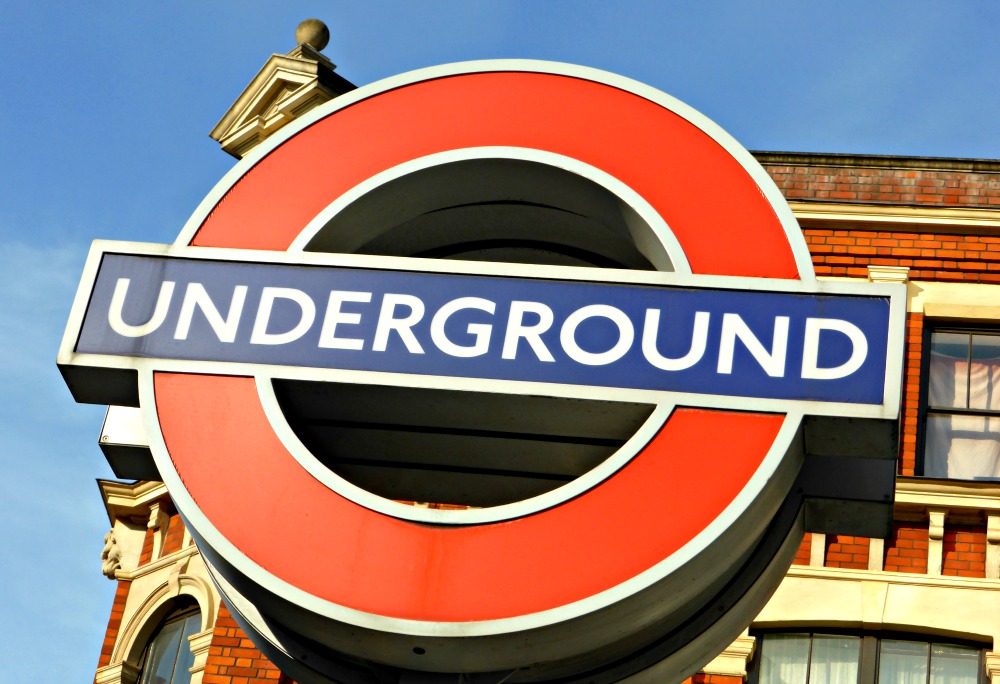
Since you’ll be making a few journeys on the itinerary it will likely be best to look at a Visitor Oyster Card or a Travel Card. The Transport for London website will give you a helpful comparison for these two options so you can make the best choice for you. Their website also includes maps to plan your route from your accommodations or a “Plan your Journey” tool where you can input your “from” and “to” locations and it will give you the results for trip time on the Tube, bus, or walking. Note the walking time as sometimes it is faster to walk than take the Tube.
There are also several free Apps available for the London Tube. To avoid roaming charges it’s best to find one that will work offline. Personally, I have one called “Tube Map London Underground” by Visual IT Limited for Android. It is free, works offline, and has a route planner on it (either on the map or with text) along with some other features.
Now that we’ve got all that taken care off we’re off on a busy day filled with many of London’s best landmarks and attractions.
*Please note that all times listed on here are approximate and will be based on things like how fast you walk, possible train delays, or unexpected crowds. I’ve done my best to estimate these based on my experiences in London to show you as much as possible in one day (albeit a fairly long, but definitely enjoyable, day).
HELPFUL LINKS:
- Download a printable version of this itinerary.
- Transport for London (TFL) ‘Plan Your Journey’ tool
- Tube Map London Underground app (Android)
- Purchase your London Eye Fast Track Tickets
09:00 – 10:00 | WESTMINSTER & WHITEHALL
Yep, it’s an early start but you’ve got places to go and things to see! You won’t be sorry you got up bright and early especially when you exit Westminster Station and look up and there it is…Big Ben!
Quite likely London’s best-known landmark, this is where the tour begins. Take some selfies or have your travel companions take your photo with Big Ben and then save them for later when you have free WiFi (at lunch) to post on all your social network sites. Don’t worry that lunch is a few hours off because with time zone differences people back home probably aren’t awake to see them yet anyway. Plus by lunch, you’ll have even more cool pics to knock their socks off with.
From the exit of the Tube station make your way out onto Westminster Bridge and take in the sights up and down the river on either side.
You’ll easily be able to see the Palace of Westminster which is the meeting place of the House of Commons and the House of Lords, the two house of the Parliament of the United Kingdom. For this reason, you’ll likely know this as the Houses of Parliament. Until Henry VIII the Palace of Westminster was actually an official royal residence, but Henry preferred Whitehall so spent he spent his time there. After a fire destroyed the original 14th-century palace in 1834, it was rebuilt in a Gothic Revival style. It was then badly damaged during the Blitz of 1940-41 so further modifications and additions were needed after World War II.
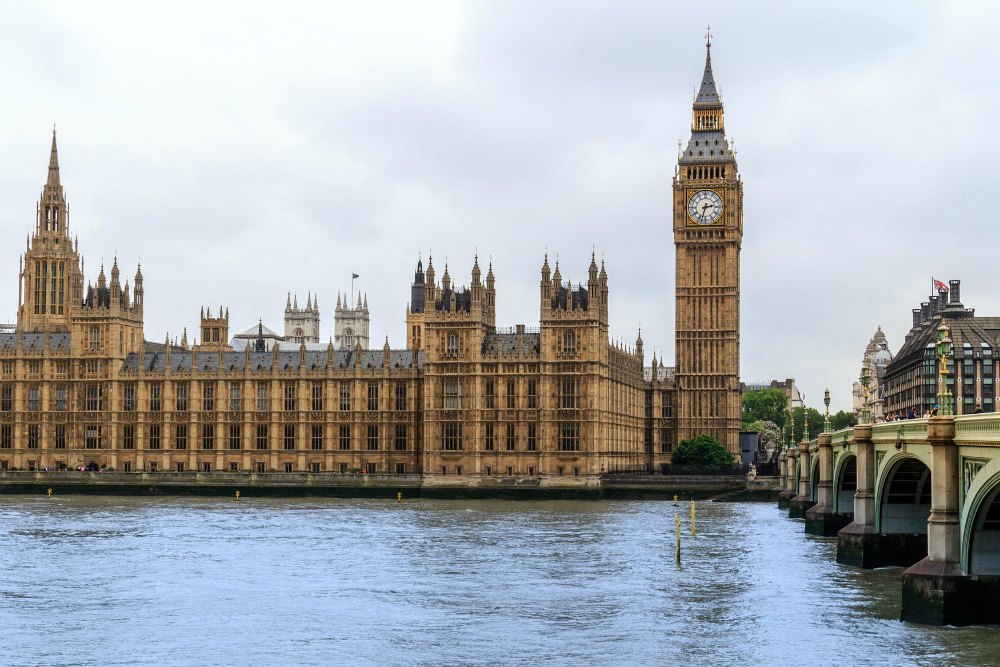
Big Ben, which is actually only the 14-ton bell and not the whole tower (that’s called the Elizabeth Tower since it was renamed in 2012 from simply “Clock Tower”), is housed 340 feet up in the tower with illuminated faces that are visible throughout the city at night. The clock dials are 23 feet in diameter and hold 312 pieces of opal glass in the manner of a stained-glass window.
The sound of the Big Ben is well known to viewers of the BBC as it tolls the hours on the radio and television networks, rings in the New Year, and chimes to mark the 11th hour of Remembrance Day which starts the two minutes of silence.
From your spot on the bridge walk back in the direction of Westminster Station and make your way to the side of the road opposite Big Ben (if you aren’t already on that side of the road). If you forgot a bottle of water or need to stop for snacks there is a Tesco Express here that you can pop into.
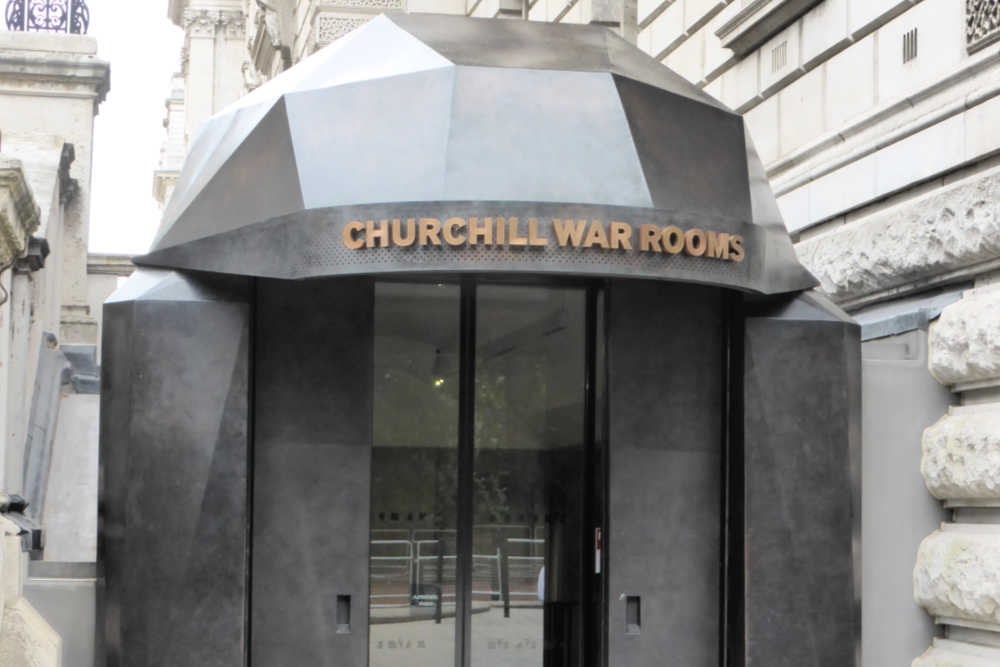
Keep walking away from the river and turn right at the first street called Parliament/Whitehall. Mind the time as you take a quick walk (you don’t want to miss your appointment time at the London Eye coming up a little later) but also be sure to keep an eye on the monuments and buildings as you make your way down this street.
Along here you will see the HM Revenue & Customs building on your left. Although most residents probably don’t appreciate this building (it’s like the IRS in the US) the architecture of it is really something and you can get some great pictures of the iconic red telephone boxes against the white stones of the building.
A little further along you’ll see the entrance to the Churchill War Rooms which is a museum that includes the Cabinet War Rooms and the bunker that kept Churchill and his government safe during the Blitz.
READ MORE: Guide to Visiting the Churchill War Rooms
As you walk along a little more you’ll see a stone monument in the centre of the road which will most likely have poppy wreaths around the base. This monument is the Cenotaph which commemorates the British and Commonwealth servicemen and women that died during World War I, World War II, and later conflicts. Remembrance Day ceremonies are held here each year on November 11th to mark the armistice signed between the Allies of WWI and Germany that stopped the hostilities on the Western Front at the 11th hour of the 11th day of the 11th month in 1918.
Just a little bit further down the street is another war memorial to commemorate the work the women undertook during World War II called the Women of World War II Memorial.
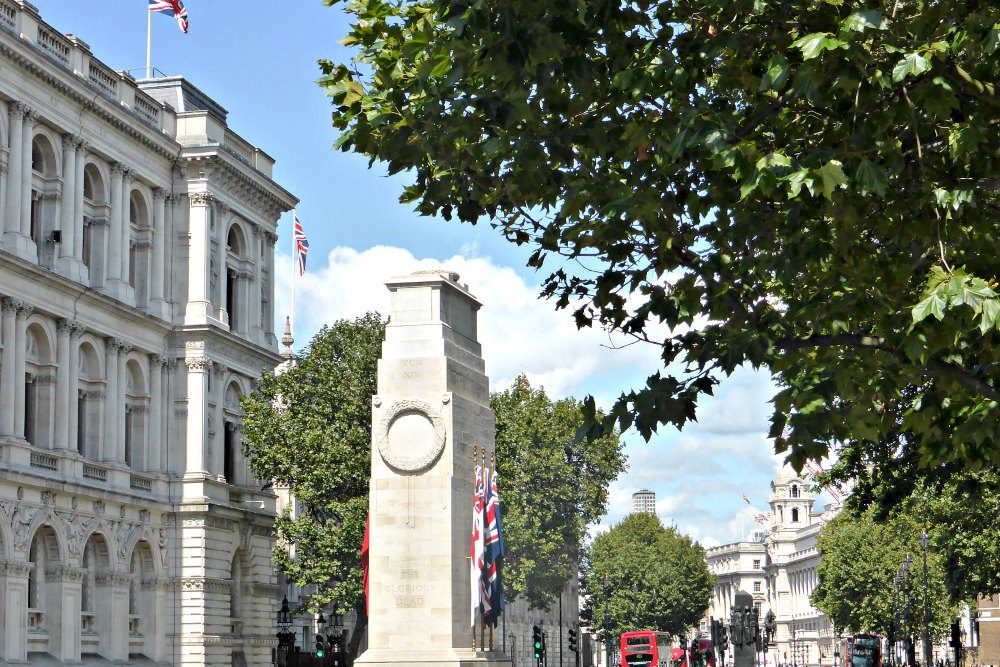
At this point, it is time to turn around and make your way back to Bridge Street where you turned on Parliament /Whitehall.
Along the way, if you notice a crowd of people and a couple of police outside a large gate then you’ll know you’ve found the entrance to the lane that goes to 10 Downing Street which is the official residence and home of the British Prime Minister. You really can’t see the actual house but you could get a photo of the street name if you’d like (it is on the side of the building).
At the corner, turn left and head over Westminster Bridge, turning left at the end of the bridge to walk along the bank of the Thames to the London Eye.
10:00 – 11:00 | LONDON EYE
Normally I’d suggest the most economical ticket choice, so your money would go further, but as this is the only entrance ticket you’ll be purchasing today and you’ve got limited time I’m going to suggest you spend the extra to get the tickets with Fast Track entry.
The online price for adults is £37.00 and children 3-15 is £32.00 (which is the discounted price off the walk-up price).
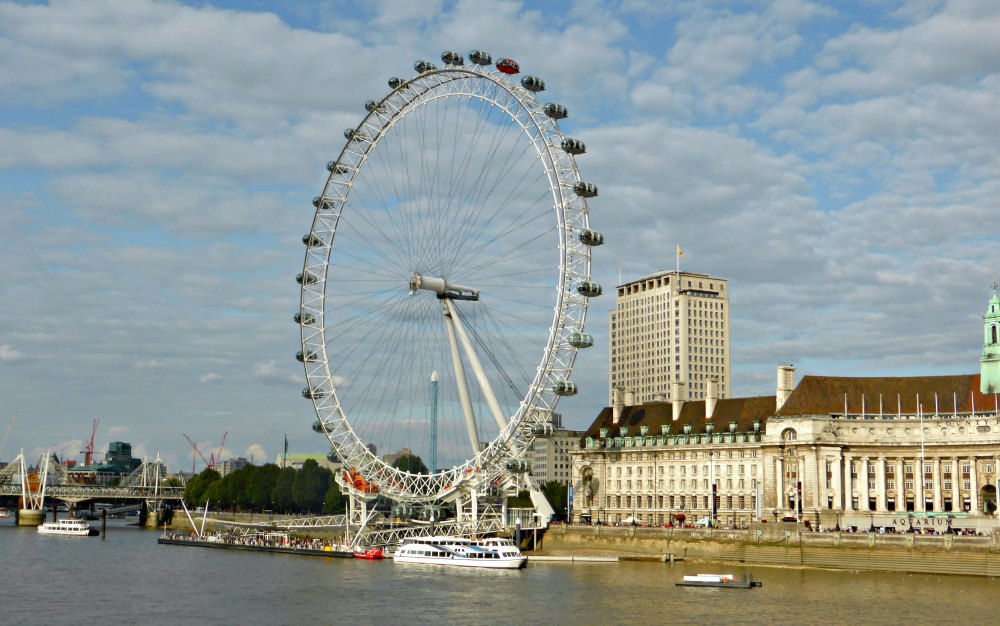
The London Eye, also called the Millennium Wheel, was initially erected as a temporary structure but has been so popular it remains today. Sir Richard Rogers sums up the London Eye like this-
“The Eye has done for London what the Eiffel Tower did for Paris, which is to give it a symbol and to let people climb above the city and look back down on it. Not just specialists or rich people, but everybody. That’s the beauty of it: it is public and accessible, and it is in a great position in the heart of London.”
The 30-minute revolution takes passengers on a slow ride up and around with great views of the whole city. Each capsule can hold 25 people, is air-conditioned, has a bench to sit down, along with tablets to give you interactive information about the buildings and landmarks you’ll see. At the end of the trip, there is also a 4D cinema experience which is about 5 minutes long and includes 3D images and special effects.
READ MORE: Guide to Visiting the London Eye
11:00 – 11:30 | PARLIAMENT SQUARE & WESTMINSTER ABBEY
Make your way back across Westminster Bridge until you come to the same intersection that you turned on to go down Parliament/Whitehall earlier but this time cross over into the park on the other side of the road.
This is Parliament Square where you’ll find several statues of notable people like Winston Churchill, Nelson Mandela, and Abraham Lincoln (over on the far side furthest from the river). Rumour has it there is a small electrical current running through Churchill’s statue to deter pigeons from landing on it and creating a mess.
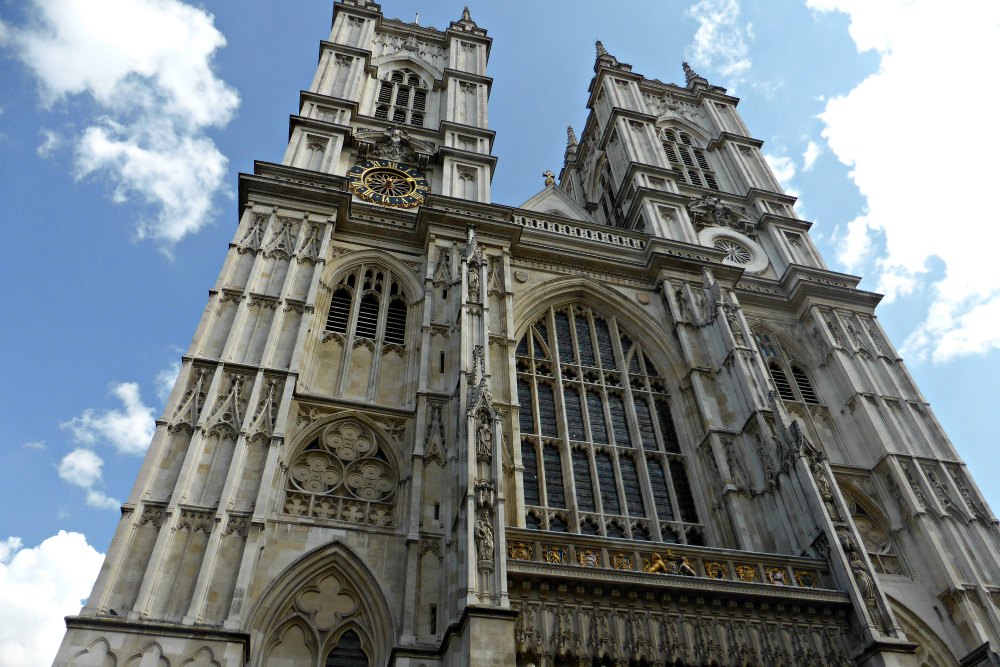
From there make your way across the park where you’ll find little St. Margaret’s Church nestled in beside Westminster Abbey.
Founded in the twelfth century by Benedictine monks, St. Margaret’s Church was built to give the local people who lived around the Abbey a simpler place of worship. Those interested in Henry VIII should look to the east window that was created in 1509 to commemorate the betrothal of Catherine of Aragon to Henry VIII. The church has been used for society weddings, including those of extended members of the British Royal Family, Members of Parliament, and staff of the House of Lords and House of Commons.
Rising up behind the trees you’ll see what some consider the greatest church of the English speaking world, Westminster Abbey. Since 1066 British monarchs, starting with King Harold and William the Conqueror, have been crowned here and there have been at least 16 royal weddings at the Abbey.
In addition to burials for about a dozen former kings and queens, the honour of being buried at the abbey was extended to generals, admirals, doctors and scientists such as Isaac Newton and Charles Darwin. In the centre of the nave is the tomb of The Unknown Warrior, an unidentified British soldier killed in World War I. He was buried on November 11, 1920, and his grave is the only one in the abbey on which it is forbidden to walk.
The Palace of Westminster and Westminster Abbey including Saint Margaret’s Church have been a UNESCO World Heritage Site since 1987.
HELPFUL LINKS:
- Download a printable version of this itinerary.
- Transport for London (TFL) ‘Plan Your Journey’ tool
- Tube Map London Underground app (Android)
- Purchase your London Eye Fast Track Tickets
11:30 – 15:00 | ST. JAMES’S PARK & BUCKINGHAM PALACE
After wandering around Westminster Abbey walk back across the park on the western side in front of the statue of Abraham Lincoln. At the corner of the park, turn left onto Great George Street and walk along the street which turns into Birdcage Walk.
As you walk along you can’t help but notice the beautiful buildings lining the street until you find yourself at the corner of St. James’s Park. Find the first path that turns right into the park and
About halfway down the lake, you’ll find a bridge. Step out into the middle of the bridge and be prepared to take some more great photos. On one side you’ll see Buckingham Palace and on the other side, you’ll see the buildings from Horse Guard’s Road peeking over the trees.
After a few photos make your way back across the bridge in the direction you came from and follow the path across the park back to the street. As you walk back
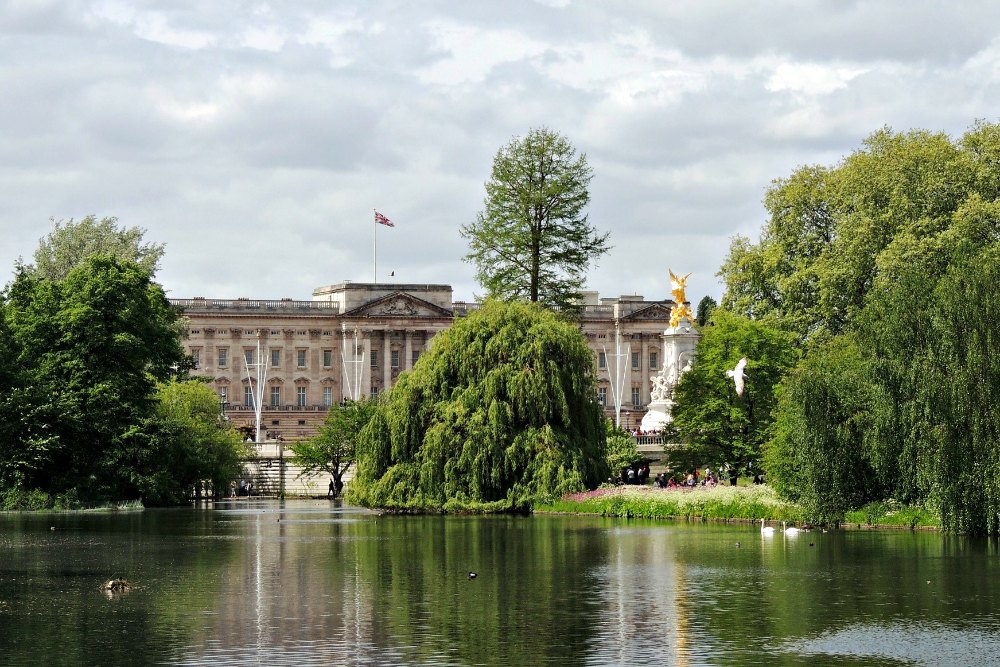
At the edge of the park, cross Birdcage Walk and head straight on Queen Anne’s Gate until you come to a pub called The Old Star on the corner of Queen Anne’s Gate and Broadway. Take note that St. James’s Tube station is just across the street (you’ll be coming back here after lunch).
At the pub, you’ll find lots of items to choose from for your picnic back in the park (just ask if you can take it out). One suggestion is their sliders and fries – four little burgers and a small order of fries. If you add a side of fries it’ll likely be enough for two for lunch. While you wait for your lunch to cook you can take advantage of the free Wifi and post some of those photos on your Facebook, Instagram, Twitter, etc. that you’re dying to share with everyone back home now. Yep, even that selfie of you with Big Ben. Come on …you know you want to!
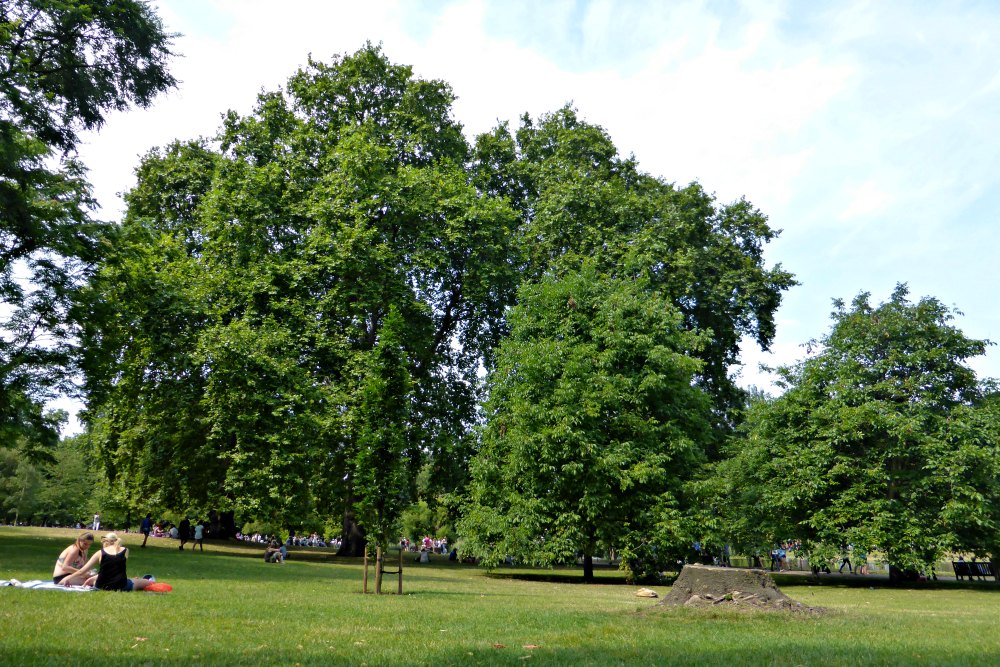
Once you’ve got your lunch head straight back to the spot under the tree you’ve already picked out and just enjoy a few quiet moments and a picnic you’ll remember for quite some time. Lay back after lunch on the grass, look up at the sky, and just daydream. Does lunch get any better than this?
About now it is probably getting on to 1:30 p.m. If you feel like you saw enough of Buckingham Palace and would just like to enjoy the beauty of the park a little longer feel free to stay. The itinerary carries on from St. James’s Park Tube station at 2:30 p.m. if you’d like to pick it up again there.
If you’d like to get closer to Buckingham Palace then it’ll be time to pack up the picnic about 1:30 and make your way along the path in the park towards the palace. At the end of the lake, you’ll get to a road that will take you along in front of Buckingham Palace and around the Victoria Memorial.
Completed in 1837, in the Georgian style of architecture, Buckingham Palace is the official residence of Queen Elizabeth II and you’ll know she’s home if the royal flag is flying. The palace is open to the public for a limited time in the summer and is a beautiful place to explore. Queen Victoria was the first monarch to live in Buckingham Palace and the memorial in front of the palace is for her.
The Victoria Memorial was dedicated in 1911 by George V and his cousin Wilhelm II of Germany, the two senior grandsons of Queen Victoria. The memorial has a large statue of Queen Victoria facing north-east, a bronze statue of the Angel of Justice facing north-west, the Angel of Truth facing south-east, and Charity facing the Palace.
From here it is now time to start making your way back towards St. James’s Park Tube station by way of the Birdcage Walk. Once on that street walk back along St. James’s Park to Queen Anne’s Gate.
On the way, you’ll pass the Guard’s Museum, which is a military museum located in Wellington Barracks, home to the five regiments of Foot Guards. The museum is fairly new, only having been open since 1988, but it gives the history of the regiments from the 17th century to present day.
A recent addition to it in 2014 is the Flanders Field 1914-2014 Memorial Garden that honours all those who fought and died in the Great War, along with being a symbol of hope and a better future for all. Designed by a Belgian architect, Piet Blanckaert, one of the most special things about this garden is that it was created with soil from the Flanders Fields battlefield cemeteries.
It is now time to go to St. James’s Park Tube station where you will take the Eastbound District Line (Green) or Circle Line (Yellow) to Monument Station. Trains leave every few minutes, from one line or the other, and take about 12 minutes to get to Monument Station.
15:00 – 16:45 | MONUMENT TO THE GREAT FIRE & TOWER OF LONDON
Just a few minutes walk from the Monument Tube station you’ll find the Monument to the Great Fire that stands at the intersection of Monument Street and Fish Street Hill. It was built between 1671 and 1677 to commemorate the Great Fire of London that took place in 1666 and to celebrate the rebuilding of the city.
The fire began in a baker’s house on Pudding Lane on September 2nd and swept through the city like, well, wildfire, for three days destroying or severely damaging thousands of houses, gates, public buildings, and churches. Thankfully there was little loss of life but the city smouldered for weeks after. The only buildings to survive were those built of stone, like St. Paul’s Cathedral and Guildhall.
The monument created for the Great Fire is 61 meters (202 feet) high, which is the exact distance between it and the site on Pudding Lane where the fire began. The drum and copper urn on top
From the Monument to the Great Fire walk southeast on Monument Street towards Lovat Lane. Along the way, you will cross Pudding Lane where the fire started. At Lovat Lane turn right for just a short distance until you reach Lower Thames Street where you will turn left. It will be about a 10-minute walk along Lower Thames Street and around the corner to the right onto A100 which goes along the Tower of London. Along the way be sure to keep an eye out for the (very gruesome, but isn’t it a cool name?) pub called the “Hung, Drawn, and Quartered” on your left and then the All Hallows by the Tower Church on your right.
All Hallows by the Tower Church is the oldest church in the City of London and was founded 400 years before the Tower of London. With its location close to the Tower of London, the church has cared for numerous beheaded bodies as they awaited burial, including that of Thomas More. The church survived the Great Fire (that started only a few hundred yards away) through the efforts of Admiral Penn and Samuel Pepys. Unfortunately, the church didn’t fare so well during WWII when it suffered extensive bomb damage leaving only the tower and the walls. To view a short video about what this little church has to offer please visit this link.
Around the corner from the church, you’ll see a great open space the overlooks the moat (though now filled with grass instead of water) around the Tower of London. If you need the toilet facilities now is a good time to stop as there are some public toilets along this area of the Tower Hill Terrace. After your quick pit stop continue to make your way towards the river and the Tower Hill Pier. Along the way, you’ll get some great photos of the Tower of London, Tower Bridge, the HMS Belfast and the Shard. Some of my favourite shots include the oh-so-modern buildings in the background behind such a historical building as the Tower of London.
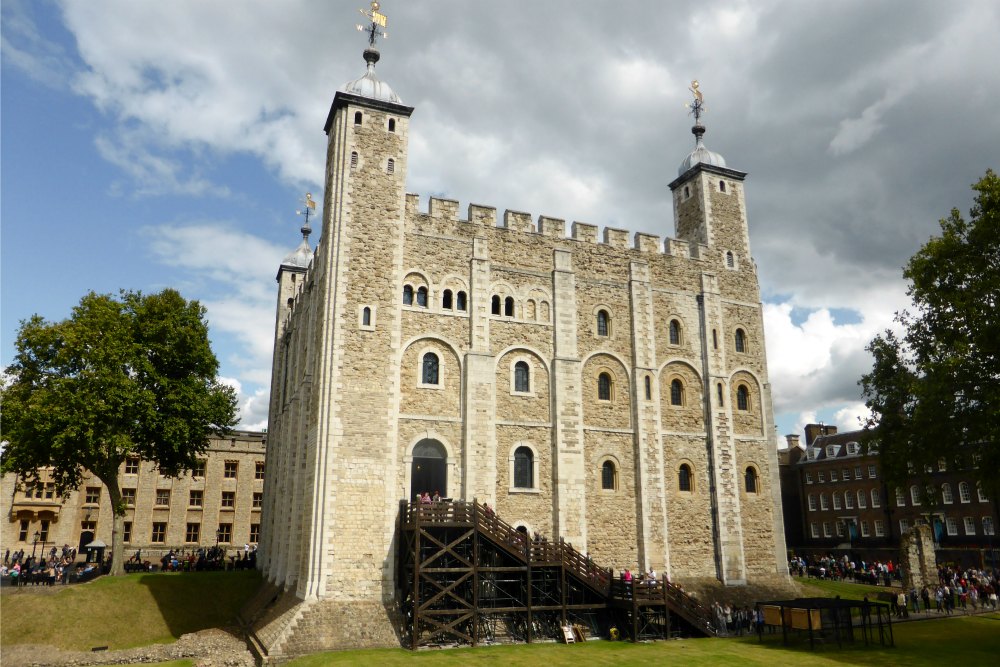
When most people think of the Tower of London they think “Off with their heads!” but in reality only seven people were beheaded within the Tower, instead it was the notorious Tower Hill to the north of the castle where over 100 executions took place during the 16th and 17th centuries when the castle was used as a prison.
Famous prisoners were Anne Boleyn, who did have her head cut off within the Tower walls and her daughter Elizabeth who later went on to become Queen Elizabeth I. The Tower was again used as a prison during WWI and WWII and saw the executions of 12 more men for espionage.
Today the almost 1000-year-old castle is home to the Crown Jewels, many medieval displays, and a gruesome exhibit of medieval weapons and torture devices. If you do stay for a visit be sure to attend one of the free tours given by the Yeoman Warders (Beefeaters) as they are full of knowledge and are very entertaining.
The Tower of London is another one of London’s additions to the UNESCO World Heritage Sites list.
READ MORE: Guide to Visiting the Tower of London
After you walk around the Tower of London it is time to make your way toward the Tower Hill tube stop.
Along the way keep an eye out for signs pointing the way to the London Wall. This was a defensive wall first built by the Romans around London back in about 200 AD when London was known as Londinium. Today all that remains of the wall are a few fragments with one of the largest and most easily accessed piece just outside this tube station.
It is now time to go to Tower Hill tube station where you will take the Westbound District Line (Green) or Circle Line (Yellow) to Embankment Station. Trains leave every few minutes, from one line or the other, and take about 17 minutes to get to Embankment Station. At Embankment exit the station and walk the remaining 8 minutes to Trafalgar Square. From the station head north on Villiers St toward Watergate Walk (0.1 miles), and then turn left onto the Strand and walk about 130 feet where you’ll find yourself at the roundabout with a statue in the middle of it.
16:45 – 21:00 | TRAFALGAR SQUARE PICCADILLY CIRCUS, & LEICESTER SQUARE
The statue in the middle of the roundabout is that of Charles I and was made about 1633. It marks the official centre of London and the point to and from many distances to London are measured. The statue faces down Whitehall towards Banqueting House where Charles I was executed. If you look in this direction you’ll see a great view of Big Ben in the not so far off distance.
If you’re not already in Trafalgar Square make your way into the (most likely very crowded) square where you’ll see Nelson’s Column. This monument was built between 1840 and 1843 to commemorate Admiral Horatio Nelson who died in the Battle of Trafalgar in 1805. Along its base are four lions, made of bronze, that were added in 1867. You’ll likely see many people on top of the lions as they pose for photos.
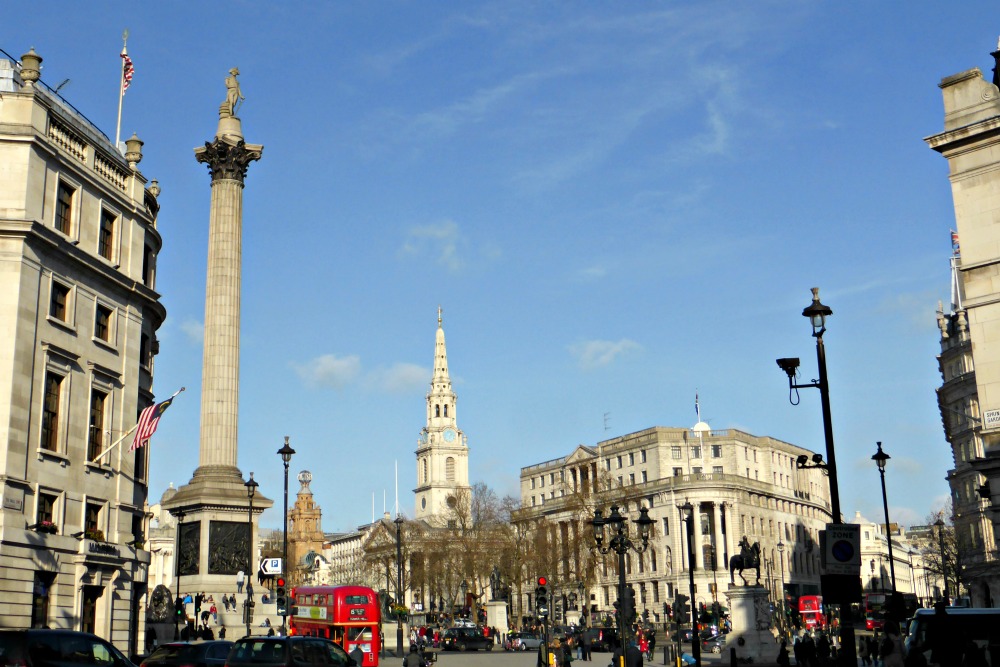
Trafalgar Square is almost always a lively place that is used for special events during the year. Along with a couple of fountains, there are also many statues and sculptures and one empty plinth (unless it is holding a temporary work of art). This was left empty since its construction in 1840 and is now known as the “Fourth Plinth” which is used to show specially commissioned artworks.
Along the perimeter of Trafalgar Square, you’ll see the National Gallery, St. Martin-in-the-Fields Church, and Canada House.
When facing Trafalgar Square, head towards your left onto Pall Mall and then turn right onto Whitcomb Street. Walk 0.2 miles and then turn left onto Coventry Street and you’ll be in the Piccadilly Circus area.
This is another very lively and busy part of the city and you’ll know you’re in the right spot when you see lots of shops, theatres, video displays, and neon signs mounted on the sides of the buildings. The “circus” part of the name comes from the Latin word meaning “circle” and Piccadilly Circus is indeed a round open space at the intersection of the road.
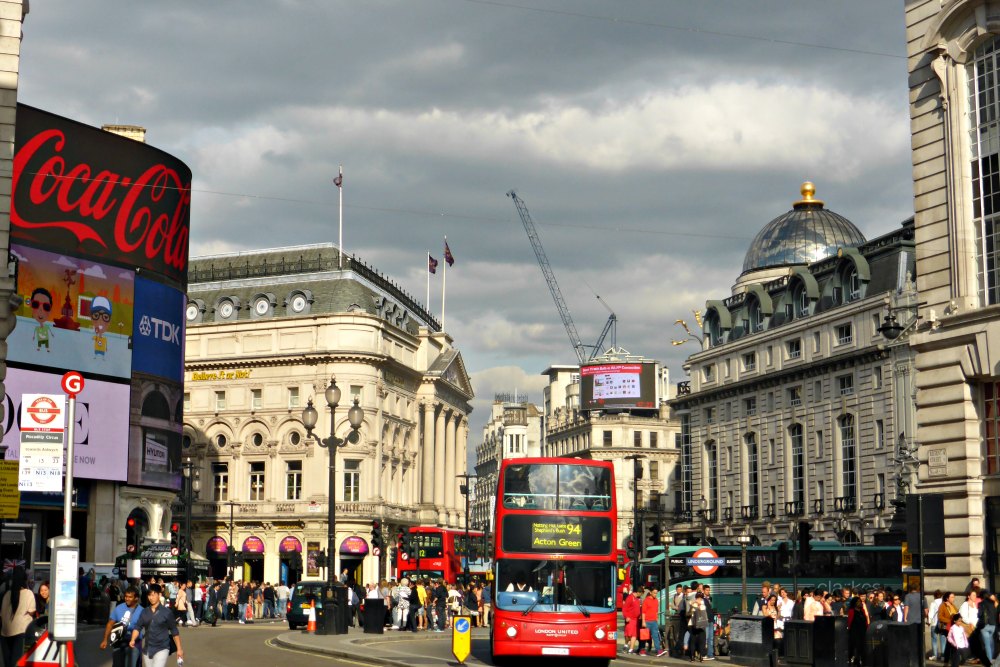
Prominent
Also right along the street in this area is a great opportunity to do that souvenir shopping you’ve been waiting for. The Cool Britannia is quite possibly the biggest souvenir shop I’ve ever seen with a ton of merchandise spread out over two levels. If you’re in need of drink while you shop, they have a little stand with water and ice cream (at the top of the stairs) and you don’t have to wait in the long line of shoppers that are checking out to get one.
After a little shopping, it is time to make your way to the last stop before a rest for dinner. When you exit the store at the main entrance turn right and walk toward Leicester Square (pronounced ‘Lester’ ). Along the way, you’ll see the London Trocadero that has been redeveloped into a hotel and is just a really neat building on the corner of two intersecting streets. There are also lots of shops and theatres along this road and it is fun just to take it all in and people watch as you go.
Once you’ve made your way to Leicester Square you’ll find another fairly busy park with a statue of William Shakespeare surrounded by dolphins in the middle of it. Leicester Square is the centre of London’s cinema land and you’ll see several movie theatres along the square.
By now you have really seen quite a bit of what London has to offer and you must be just about ready to call it a day. If you want to head back to your accommodations for dinner and an early evening the Leicester Square Tube station is very nearby to catch a train. If you’d like to stay in the area for dinner and then a little after-dinner entertainment please read on a little further.
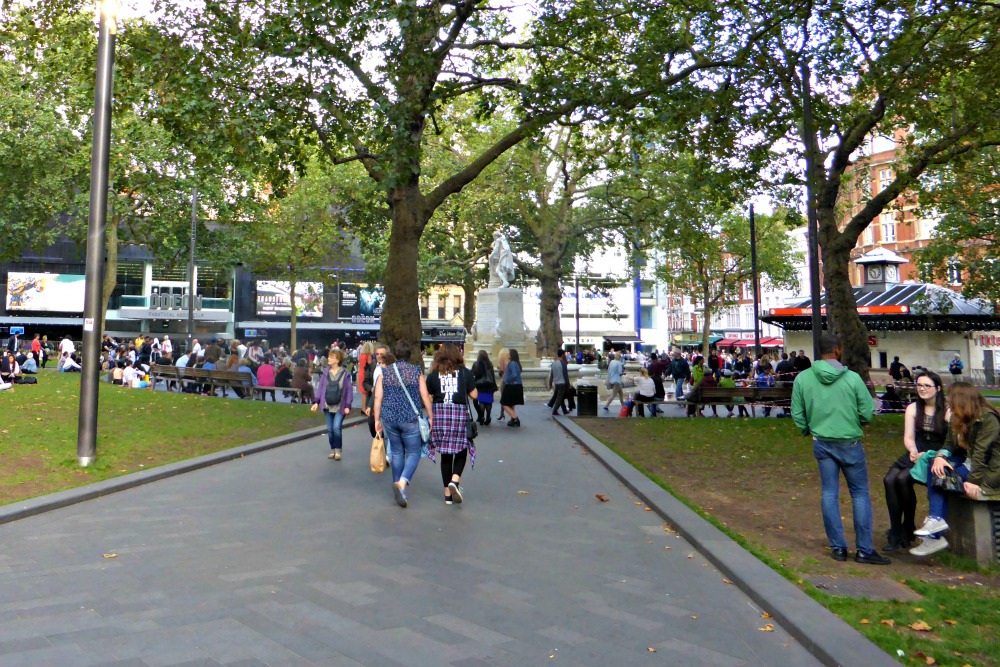
Just a 5-minute walk from Leicester Square is Brown’s Bar & Brasserie that is a nice place for dinner at a reasonable price. Personally, I’d recommend a London tradition and have some fish and chips with mushy peas that are delicious!
To get to the restaurant head northeast on Leicester Square towards Leicester Place and then continue onto Cranbourn Street. Turn right onto St. Martin’s Lane and the restaurant is on the right.
After dinner Covent Garden is an option to end your day in London with the quite entertaining buskers in Covent Garden.
From the restaurant take a right out the front door and walk along St. Martin’s Lane and then turn left onto New Row. Follow that street for about 440 feet to Bedford Street and turn right and then a left onto Henrietta Street and further left on Southhampton Street. This should put you in the Covent Garden Market and you’ll see a crowd, if a busker is already performing, or a crowd growing getting ready to watch the next act.
To return to your accommodations you can head back to the Leicester Square Tube station or the Covent Garden Tube station.
HELPFUL LINKS:
- Download a printable version of this itinerary.
- Transport for London (TFL) ‘Plan Your Journey’ tool
- Tube Map London Underground app (Android)
- Purchase your London Eye Fast Track Tickets
Want to save this for later? Click the Pinterest button on the left for a pinnable image!
RESOURCES | PLAN YOUR DAY IN LONDON
To book flights, rental cars, accommodations, and activities for your trip, please check out our recommended travel providers, favourite apps and websites.
These are a few tours we would recommend for your visit to London.
Some of the links in the post above are affiliate links. This means if you click on the link and purchase the item, we will receive an affiliate commission but this does not affect the price to you. Please read our full disclosure policy here.





